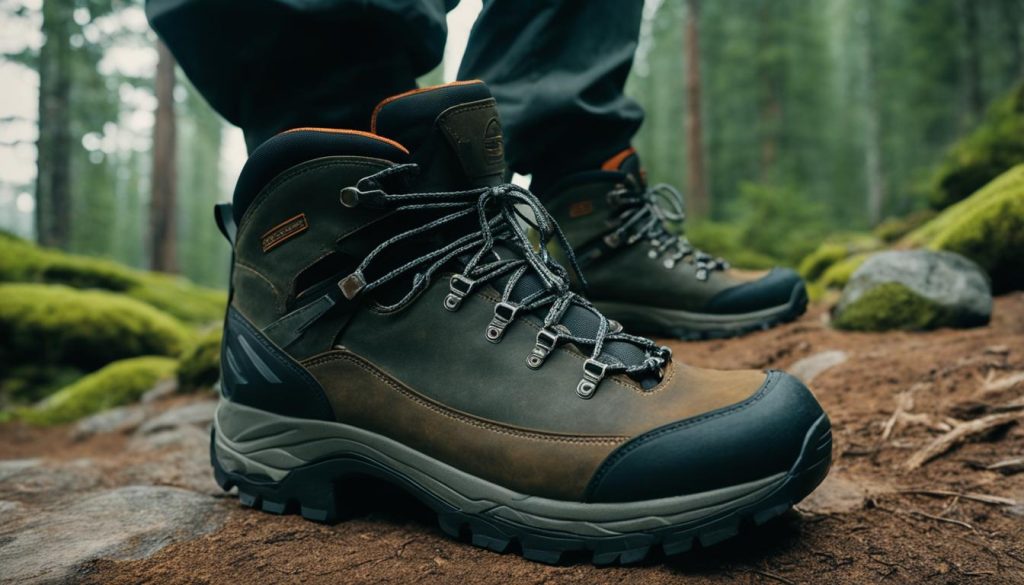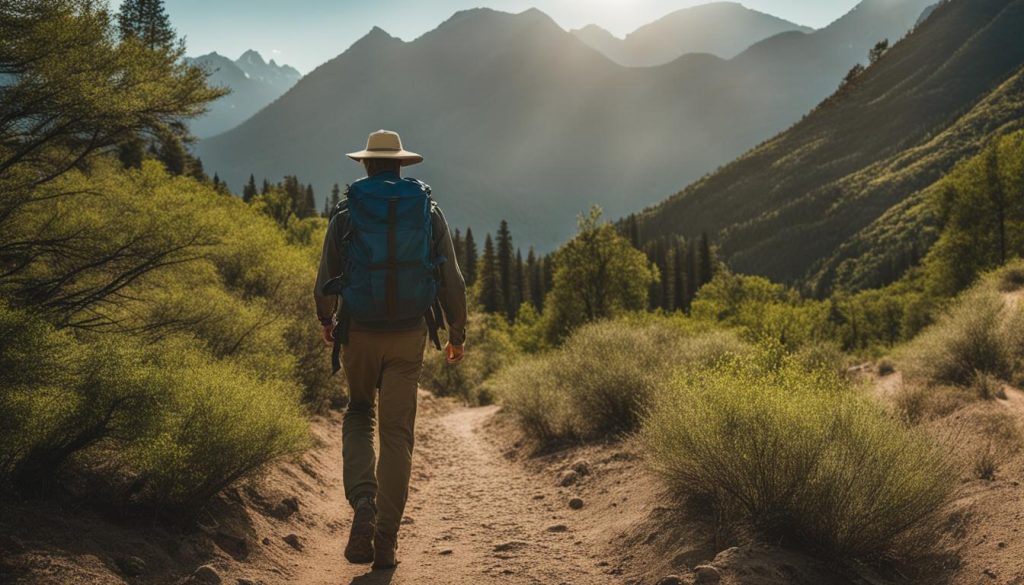Welcome to your ultimate guide on hiking safety! Whether you are a beginner or an experienced hiker, it’s essential to prioritize your safety while exploring the great outdoors. By following these hiking safety guidelines and secure hiking practices, you can ensure a secure and enjoyable outdoor adventure. Let’s dive in!

Key Takeaways:
- Always carry a well-equipped hiking gear with essentials like a map, compass, first-aid kit, extra clothing, food, and water.
- Plan your hike in advance and research the trail conditions, weather forecast, and difficulty level to ensure it aligns with your skills and fitness.
- Inform a reliable contact about your hiking plans, including the expected start and end time, trail details, and emergency contact numbers.
- Stay on designated trails and avoid venturing into unknown or restricted areas to minimize the risk of accidents or getting lost.
- Take breaks, stay hydrated, and listen to your body during the hike. Don’t push your limits and be aware of signs of exhaustion or dehydration.
Now that you’re equipped with these outdoor adventure safety tips and safe hiking recommendations, you’re ready to hit the trails with confidence. Remember, your safety is paramount, so always be prepared and enjoy the wonders of nature responsibly.
Essential Hiking Safety Guidelines
When it comes to hiking, safety should always be a top priority. By following essential hiking safety guidelines, you can ensure a secure and enjoyable outdoor adventure. Whether you’re an experienced hiker or just starting out, these practices and tips will help minimize risks and enhance your hiking experience.
Secure Hiking Practices
Implementing secure hiking practices is crucial for maintaining your safety on the trail. Here are some key tips to keep in mind:
- Choose appropriate trails for your skill level and physical fitness.
- Inform someone about your hiking plans, including the trail you’ll be taking and your estimated return time.
- Carry essential navigation tools, such as a map, compass, or GPS device.
- Dress appropriately for the weather and wear sturdy, comfortable footwear.
- Stay hydrated and bring enough water for the duration of your hike.
- Be aware of your surroundings and stay on marked trails.
Wilderness Safety Tips
When venturing into the wilderness, it’s important to be well-prepared and knowledgeable. Consider the following wilderness safety tips:
- Research the area beforehand and familiarize yourself with potential hazards, wildlife, and weather conditions.
- Pack essential emergency supplies, including a first aid kit, whistle, flashlight, and extra food.
- Be cautious of wildlife encounters and maintain a safe distance.
- Properly store food and dispose of waste to minimize the risk of attracting wildlife.
- Never approach or attempt to feed wild animals.
Remember, wilderness safety is a shared responsibility. By practicing Leave No Trace principles, we can preserve and protect our natural surroundings for future generations.
Hiking Preparation Tips
Preparing adequately for a hike is essential for a safe and enjoyable experience. Consider the following hiking preparation tips:
- Research the trail and its difficulty level to ensure it matches your capabilities.
- Create a checklist of necessary gear and supplies, including proper clothing, footwear, food, and water.
- Check the weather forecast before heading out and dress accordingly.
- Plan your route and familiarize yourself with the trail markers and potential landmarks.
- Start hiking early in the day to allow enough time for breaks and unforeseen circumstances.
By following these hiking preparation tips, you’ll increase your chances of having a smooth and enjoyable journey.
Incorporating these essential hiking safety guidelines into your outdoor adventures will help ensure that you have a secure and memorable experience. Remember to always prioritize your safety, be prepared, and respect the natural environment. Now that you’re equipped with the knowledge to hike safely, go out and explore the great outdoors!
Conclusion
In conclusion, prioritizing hiking safety is crucial for a successful outdoor adventure. By following the recommended safe hiking recommendations, you can have a secure and enjoyable hiking experience. Remember to always prioritize your safety and be prepared for any challenges that may arise during your hiking journey. Stay safe out there!





